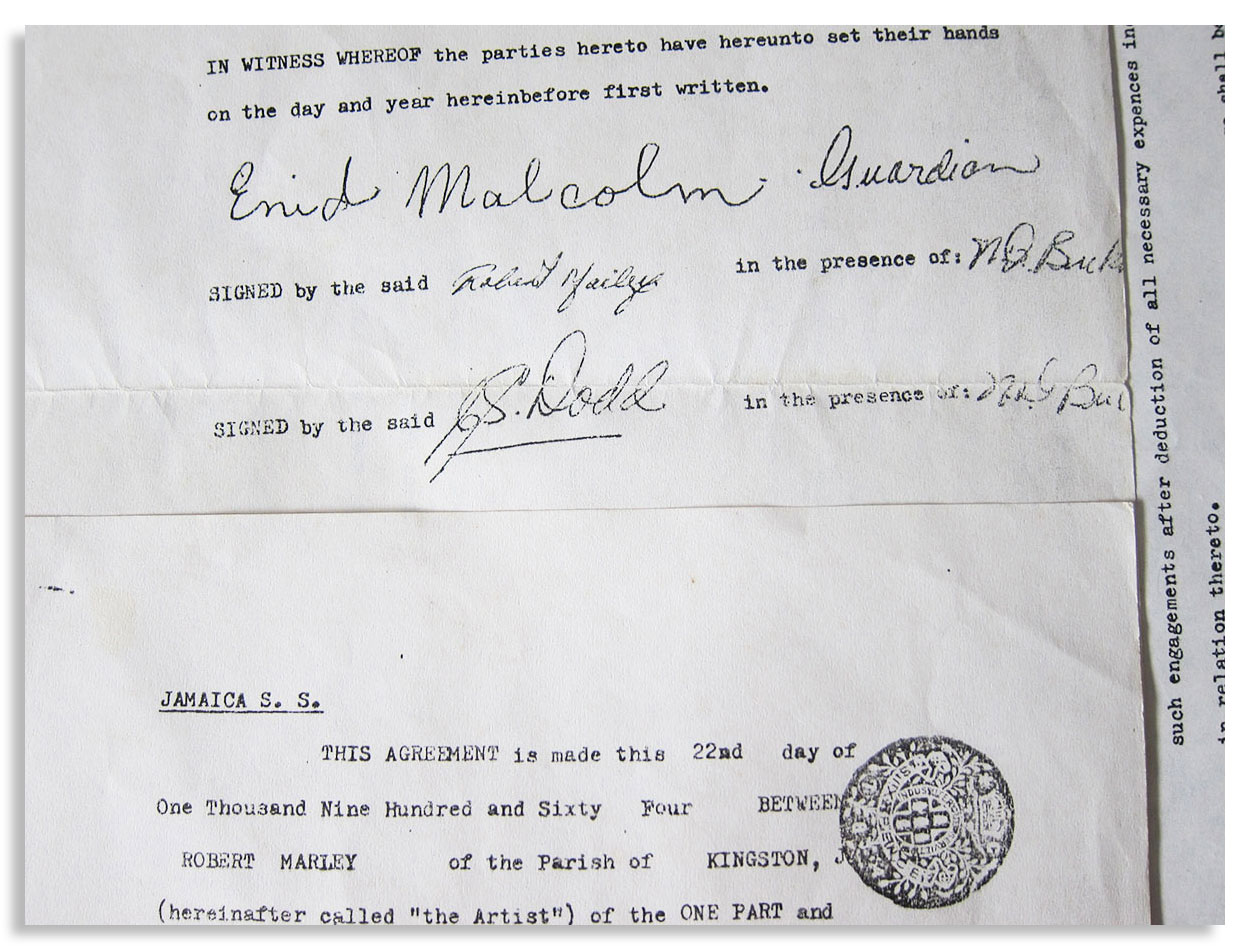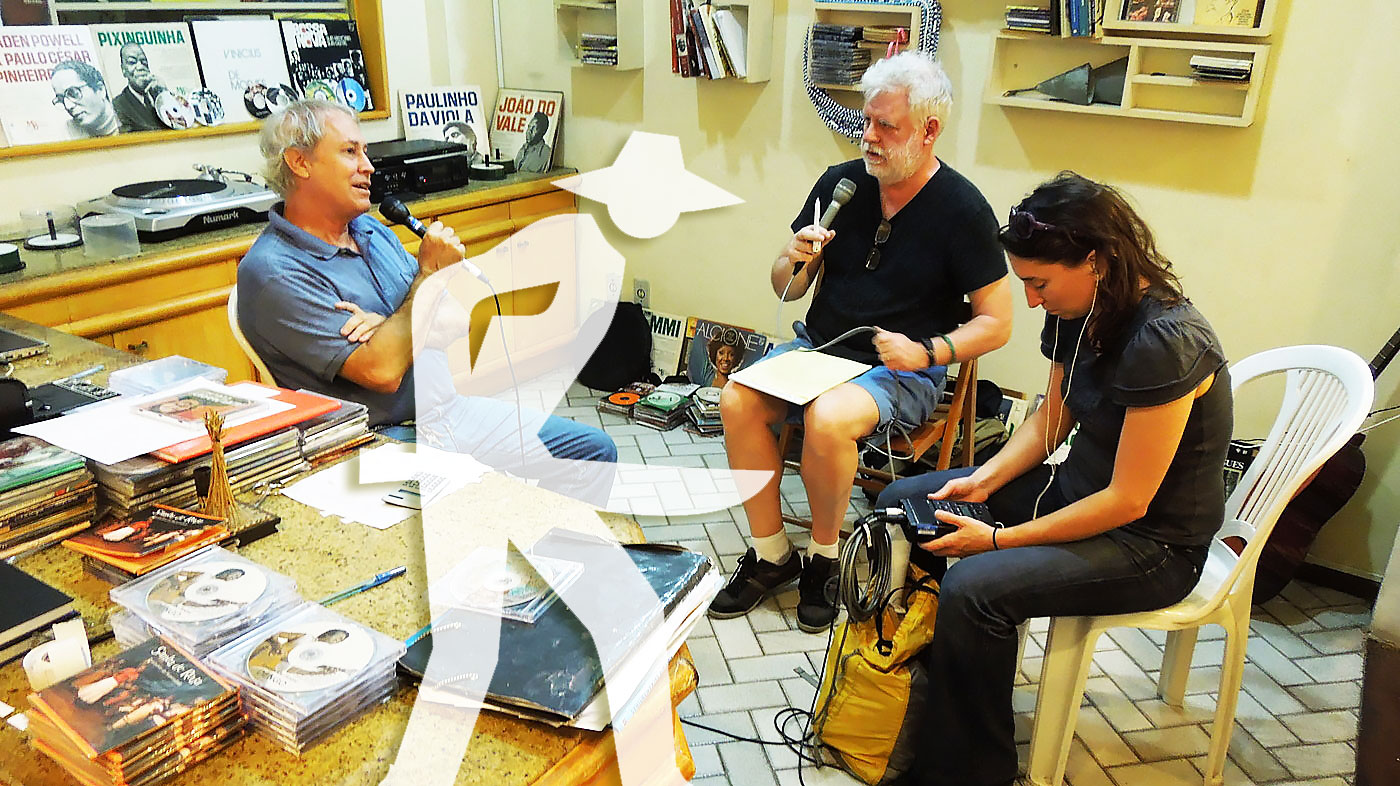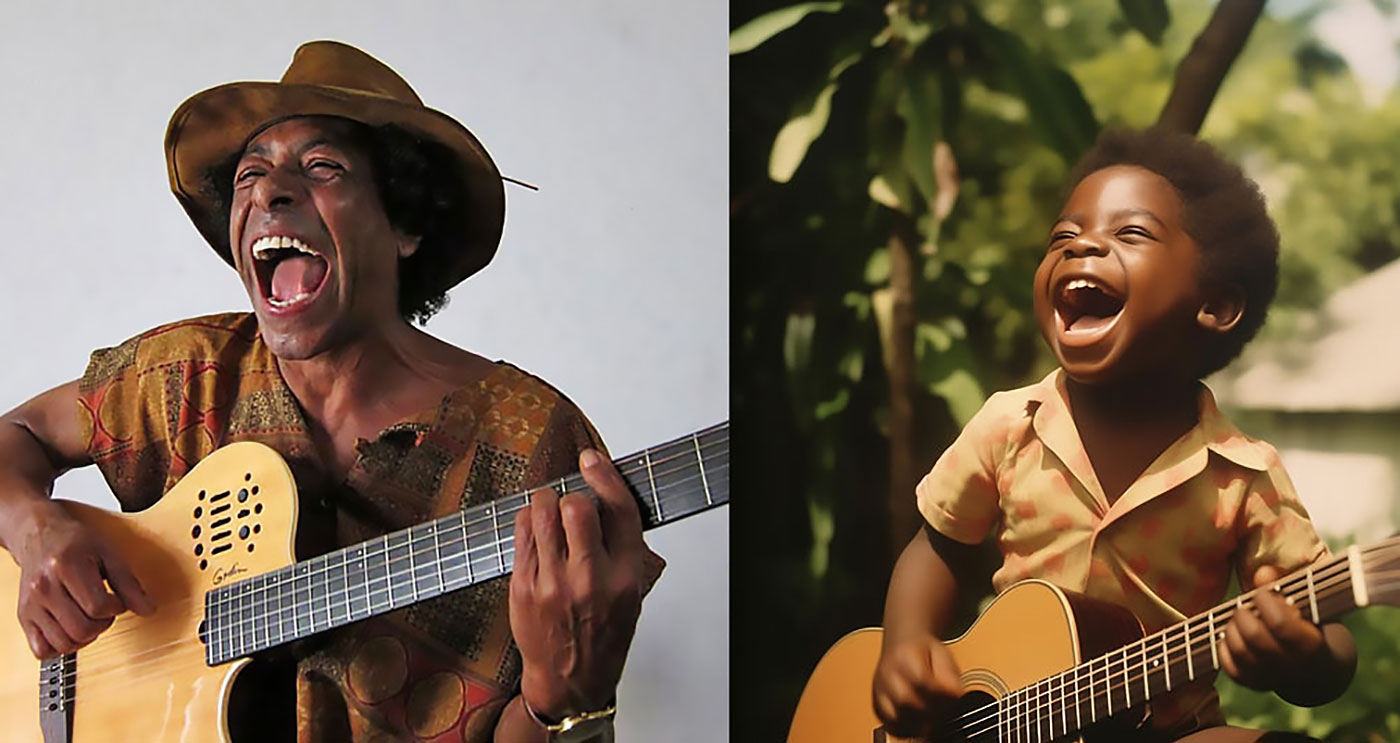Matrix Page
 Curation & Recommendations
Curation & Recommendations...of and for musicians, writers, academics, painters, choreographers, filmmakers, theater directors, sound and set designers, chefs...
CURATION
- from this page: by Matrix
Network Node
- Name: Nelson Latif
- City/Place: São Paulo
- Country: Brazil
Life & Work
-
Bio:
ENGLISH:
Cavaquinho and acoustic guitar player Nelson Latif formed his musical identity in the legendary jazz scene of 1980's São Paulo. With roots in choro and jazz, Latif merges Brazilian styles and a classical guitar technique with diverse musical influences. In his melodic phrasing one hears bebop and Brazilian syncopations, and in his virtuosity the energy of flamenco.
Latif started his studies at age fourteen. At seventeen he was already accompanying singers in the São Paulo nightlife. At this time he won a music school competition and was awarded a scholarship to study conducting and composition at the Faculdade Santa Marcelina. Upon completing this course, he continued his classical guitar studies at the Faculdade Paulista de Música.
In the early 80´s Latif joined several groups in his native São Paulo. Two of these strongly influenced his musical development: the Quarteto Paulista, a choro group formed by some of the best São Paulo musicians, and a flamenco duo with guitarist Julio Ramires. Also during this period, Latif studied electric guitar with Mozart Mello and improvisation with Paulo Belinatti.
In 1988, after a tour in Europe with the choro trio Remelexo, Latif moved to Lisbon, where he gave workshops at the Juventude Musical Portuguesa and taught classical guitar at the well-known Escola de Guitarra de Duarte Costa.
In 1989 Latif moved to Amsterdam, where he lived for twelve years. During this time he was a member of Uit de Kunst, an organization designed to promote foreign culture in Holland. Latif also continued his musical career by playing with several important musicians on the Dutch jazz scene. Latif also toured many countries with Brazilian musicians, playing jazz and world music festivals, and made several recordings.
During the 90's Latif started performing on the cavaquinho, an instrument that has since become his trademark.
Between 1997 and 2000 he led the group Raiz Latina, touring throughout the Asian continent. They recorded their debut album in Seoul with the well-known Korean singer Kim Jun.
In 2001 he formed Trio Baru with the musicians Fernando Corbal and Bosco Oliveira.
He recorded the CD Brazilian Portrait together with the saxophonist Flávio Sandoval in 2003, and promoted this album in Brazil and Europe. In this same year he went to Suriname several times to play concerts and give workshops and lectures. Together with the guitarists Stanley Noordpool and Robby Faverey he played at the Carifesta and the Groen Festival.
In 2004 Latif formed a duo with the multi-instrumentalist Carlinhos Antunes. In 2005 he joined forces with Ustad Zamir Khan, sitar and tabla player and member of the legendary family of Indian musicians. Latif and Khan merged the traditional music of their countries, discovering a whole new world of musical possibilities. Also in 2005, Latif recorded the CD Choro, Samba e Afins with Dutch guitarist Joeri de Graaf. This recording started off the Choramundo Project, uniting musicians from Holland, Suriname and Brazil.
Since 2002 Nelson Latif has been ahead of the Alma Brasileira Project, designed for universities and cultural institutions all around the world. The project consists of workshops, concerts and lectures, addressing the history and diversity of traditional Brazilian music.
Nelson Latif is also a sociologist, graduated from the University of São Paulo.
PORTUGUÊS:
Violonista e cavaquinista, Nelson Latif é fruto da boa safra de músicos paulistanos da década de 80. Com formação musical em jazz e choro, atua nos principais palcos brasileiros e europeus.
Nelson Latif une os fundamentos da música clássica às diversas tendências musicais assimiladas ao longo da carreira. No fraseado melódico, linhas de forte influência jazzística executadas ora no ritmo sincopado e alegre do choro, ora com a precisão e o vigor do flamenco produzem um estilo singular, marca inconfundível do artista.
Latif iniciou seus estudos de violão clássico aos 14 anos e aos 17 já acompanhava cantores nos bares da intensa noite paulistana. Um ano mais tarde, venceu o festival de música secundarista promovido pela Faculdade Santa Marcelina, onde passou a estudar composição e regência. Continuou seus estudos de música na Faculdade Paulista de Arte, como aluno do curso de Bacharelado em Violão.
No início dos anos 80, integrou diversos grupos musicais na cidade de São Paulo com o violonista e guitarrista, entre os quais se destacam o Quarteto Paulista e o duo de música flamenca que formou com o violonista Julio Ramires. Nesse período, foi aluno do guitarrista Mozart Mello e do violonista Paulo Bellinati, com quem estudou harmonia e improvisação.
Em 1988, com Trio Remelexo, mudou-se para Portugal, onde ministrou workshops de música brasileira para a Juventude Musical Portuguesa. Em Lisboa, foi professor da renomada Escola de Guitarra de Duarte Costa. Apresentou-se com o Trio Remelexo (Nelson Latif, João Arruda e Eduardo Miranda) durante um ano nos principais teatros portugueses.
Em 1989, Nelson Latif radicou-se em Amsterdã. Durante os 12 anos em que morou na Holanda, foi membro do time de professores da Uit de Kunst, instituição divulgadora da cultura estrangeira no país, e trabalhou com diversos artistas. Também acompanhou nesse período os músicos brasileiros, tais como Mestre Marçal, Alcir da Mangueira, Ceumar e Lílian Vieira e os grupos Raíces de América, Quinteto Violado e Fuzuê. Participou de diversos festivais de jazz e world music, tais como o holandês North Sea Jazz Festival, o belga Sfinks Festival, o austríaco Sun Splash Festival e os Festivais de Jazz de Istambul, Lisboa e Jacarta.
Na década de 90, começou a se apresentar também com o cavaquinho, instrumento que o caracteriza desde então.
De 1997 a 2000, Latif dirigiu o grupo Raiz Latina, que o acompanhou em inúmeras turnês pela Ásia, das quais resultou o CD Love, gravado na Coréia.
Nelson Latif voltou a residir no Brasil em 2001, onde forma com os violonistas brasilienses Fernando Corbal e Bosco Oliveira o Trio Baru.
Em 2003, lançou com o saxofonista paulistano Flávio Sandoval o CD Brazilian Portrait, divulgado em turnês no Brasil e na Europa. No mesmo ano, foi acolhido pelo país vizinho Suriname, onde se apresentou diversas vezes, entre elas no Groen Festival, ao lado dos renomados violonistas surinameses Stanley Noordpool e Robby Faverey, e no Carifesta.
Em 2004, formou parceria musical com o também multiinstrumentista de cordas paulistano Carlinhos Antunes.
Em 2005, em duo com o músico indiano Ustad Zamir Khan, sitarista e tablista da legendaria família Khan, trafega pela pouco explorada união entre a música tradicional da Índia e do Brasil.
De 2006 até o presente, Latif tem se apresentado com o Trio Baru ou em concertos solo em palcos nacionais e internacionais.
Como promotor cultural, Nelson Latif coordena o Projeto Alma Brasileira, composto de oficinas musicais, palestras sobre a história da música brasileira e concertos. O projeto visa à difusão da nossa música no exterior e já foi apresentado em diversas universidades e centros de cultura brasileira, em mais de 30 paises.
Nelson Latif é também sociólogo, formado pela Universidade de São Paulo.
Contact Information
- Email: [email protected]
-
Management/Booking:
Brasília +55 61 9264-0911
Amsterdam +31 (0 ) 623675176
Media | Markets
- ▶ Instagram: latif_nelson
- ▶ Website: http://www.nelsonlatif.com
- ▶ YouTube Channel: http://www.youtube.com/channel/UCwIxHZrPdW28uoTRM6AdsTA
- ▶ YouTube Music: http://music.youtube.com/channel/UC0bQ4imgAXzuF9uCZMSX4ug
- ▶ Spotify: http://open.spotify.com/artist/76mdfz2j4FmB9CIVqsxMtQ

The Matrix is a small world network in which creators may recommend other creators and be recommended by other creators. And where, like stars coalescing into a galaxy, creators in the Matrix mathematically gravitate to proximity to all other creators in the Matrix, no matter how far apart in location, fame or society. This gravity is called "the small world phenomenon".
![]() Wolfram MathWorld on the Small World Phenomenon
Wolfram MathWorld on the Small World Phenomenon
![]() Matemática Wolfram sobre o Fenômeno do Mundo Pequeno
Matemática Wolfram sobre o Fenômeno do Mundo Pequeno
While the Matrix's utilization of small world gravity is unprecedented, small world networks are all around us, even inside us: our brains contain small world networks. Humanity is a small world network wherein over 8 billion human beings average 6 or fewer steps between any two given people, anywhere. Those steps are seldom all transitable though. In the Matrix they are. In a small world great things are possible.

It's not which pill you take, it's which pathways you take, pathways originating in the sprawling cultural matrix of Brazil: Indigenous, African, Sephardic and then Ashkenazic, European, Asian... Matrix Ground Zero is the Recôncavo, contouring the Bay of All Saints, earthly center of gravity for the disembarkation of enslaved human beings — and for the sublimity they created — the Recôncavo presided over by the ineffable Black Rome of Brazil: Salvador da Bahia.
("Black Rome" is an appellation per Caetano Veloso, son of the Recôncavo, via Mãe Aninha of Ilê Axé Opô Afonjá.)
"Dear Sparrow: I am thrilled to receive your email! Thank you for including me in this wonderful matrix."
—Susan Rogers: Personal recording engineer for Prince, inc. "Purple Rain", "Sign o' the Times", "Around the World in a Day"... Director of the Berklee Music Perception and Cognition Laboratory
"Thanks! It looks great!....I didn't write 'Cantaloupe Island' though...Herbie Hancock did! Great Page though, well done! best, Randy"
"We appreciate you including Kamasi in the matrix, Sparrow."
—Banch Abegaze: manager, Kamasi Washington
"This is super impressive work ! Congratulations ! Thanks for including me :)))"
—Clarice Assad: Pianist and composer with works performed by Yo Yo Ma and orchestras around the world
"Dear Sparrow, Many thanks for this – I am touched!"
—Julian Lloyd-Webber: UK's premier cellist; brother of Andrew Lloyd Webber (Evita, Jesus Christ Superstar, Cats, Phantom of the Opera...)
"Thanks, this is a brilliant idea!!"
—Alicia Svigals: World's premier klezmer violinist
Developed here in the Historic Center of Salvador ↓ .
![]() Bule Bule (Assis Valente)
Bule Bule (Assis Valente)
"♫ The time has come for these bronzed people to show their value..."
Production: Betão Aguiar
MATRIX MODUS OPERANDI
Recommend somebody and you will appear on that person's page. Somebody recommends you and they will appear on your page.
Both pulled by the inexorable mathematical gravity of the small world phenomenon to within range of everybody inside.
And by logical extension, to within range of all humanity outside as well.
MATRIX (PARDAL)
I'm Pardal here in Brazil (that's "Sparrow" in English). The deep roots of this project are in Manhattan, where Allen Klein (managed the Beatles and The Rolling Stones) called me about royalties for the estate of Sam Cooke... where Jerry Ragovoy (co-wrote Time is On My Side, sung by the Stones; Piece of My Heart, Janis Joplin of course; and Pata Pata, sung by the great Miriam Makeba) called me looking for unpaid royalties... where I did contract and licensing for Carlinhos Brown's participation on Bahia Black with Wayne Shorter and Herbie Hancock...
...where I rescued unpaid royalties for Aretha Franklin (from Atlantic Records), Barbra Streisand (from CBS Records), Led Zeppelin, Mongo Santamaria, Gilberto Gil, Astrud Gilberto, Airto Moreira, Jim Hall, Wah Wah Watson (Melvin Ragin), Ray Barretto, Philip Glass, Clement "Sir Coxsone" Dodd for his interest in Bob Marley compositions, Cat Stevens/Yusuf Islam and others...
...where I worked with Earl "Speedo" Carroll of the Cadillacs (who went from doo-wopping as a kid on Harlem streetcorners to top of the charts to working as a janitor at P.S. 87 in Manhattan without ever losing what it was that made him special in the first place), and with Jake and Zeke Carey of The Flamingos (I Only Have Eyes for You)... stuff like that.

Yeah this is Bob's first record contract, made with Clement "Sir Coxsone" Dodd of Studio One and co-signed by his aunt because he was under 21. I took it to Black Rock to argue with CBS' lawyers about the royalties they didn't want to pay (they paid).
MATRIX MUSICAL
I built the Matrix below (I'm below left, with David Dye & Kim Junod for U.S. National Public Radio) among some of the world's most powerfully moving music, some of it made by people barely known beyond village borders. Or in the case of Sodré, his anthem A MASSA — a paean to Brazil's poor ("our pain is the pain of a timid boy, a calf stepped on...") — having blasted from every radio between the Amazon and Brazil's industrial south, before he was silenced. The Matrix started with Sodré, with João do Boi, with Roberto Mendes, with Bule Bule, with Roque Ferreira... music rooted in the sugarcane plantations of Bahia. Hence our logo (a cane cutter).
A Massa (do povo carente) / The Masses (of people in need)

-
Add to my PlaylistA Massa - Raymundo Sodré (7,093 plays)
-
Add to my PlaylistSina de Cantador - Raymundo So... (6,909 plays)
-
Add to my PlaylistMagnetismo - Raymundo Sodré ... (6,353 plays)
-
Add to my PlaylistSacando a Cana - Raymundo Sodr... (5,957 plays)
-
Add to my PlaylistMêrêrê - Raymundo Sodré (5,465 plays)
-
Add to my PlaylistJardim do Amor - Raymundo Sodr... (4,677 plays)
-
Add to my PlaylistDebaixo do Céu - Raymundo Sodr... (4,151 plays)
-
Add to my PlaylistDesejo de Amar - Raymundo Sodr... (3,861 plays)
-
Add to my PlaylistOração pra Yá Oxum - Raymundo ... (3,741 plays)
-
Add to my PlaylistYá África - Raymundo Sodré (3,509 plays)
-
Add to my PlaylistMeu Rio, Cadê o Papel - Raymun... (3,177 plays)
-
Add to my PlaylistCasa de Trois - Raymundo Sodré... (2,896 plays)
-
Add to my PlaylistMulher é Laço que Prende o Coração do Vaqueiro - R... (2,556 plays)








































































































































































































































































































































































































































































